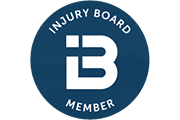 Like many Californians, you may drive your automobile everywhere, trusting that your tires will always give you enough traction to keep you heading in the right direction and under control. Under ideal conditions, as long as your car is maintained mechanically and your tires are also well maintained, you are most likely to get where you are going without mishap. However, stormy or snowy weather, poorly maintained roads and road debris are all part of the California driving experience; so we must plan ahead and make sure our car tires can handle challenging conditions as well as smooth easy dry roads. Fall is here. And Winter is coming.
Like many Californians, you may drive your automobile everywhere, trusting that your tires will always give you enough traction to keep you heading in the right direction and under control. Under ideal conditions, as long as your car is maintained mechanically and your tires are also well maintained, you are most likely to get where you are going without mishap. However, stormy or snowy weather, poorly maintained roads and road debris are all part of the California driving experience; so we must plan ahead and make sure our car tires can handle challenging conditions as well as smooth easy dry roads. Fall is here. And Winter is coming.
A new report by the National Highway Traffic Safety Administration has shown that 1 in 20 auto accidents may be linked to tire-related issues. Under-inflated tires seem to be the biggest culprit:
“Underinflation was the biggest problem, with a tire 25 percent below its rated pressure three times more likely to be involved in a crash.”
The NHTSA published the following list on Tire Safety Checklist that only takes 5 minutes of your time once per month. As a San Francisco Auto Accident Attorney, I consider automobile safety top priority. If everyone rides more safely, then I won’t have as much business. But I will be very happy if something I blog about can help to reduce the amount or severity of accidents in our community.
Extend the life of your tires and improve your safety (and that of your friends and family) by following the information I provided here. You may save lives too.
If it’s predicable, it’s preventable…
About the author: Claude Wyle is an aggressive advocate for Bay Area motorists and passengers. Claude has decades of experience representing those harmed by the wrongful conduct of other, and, as a San Francisco personal injury attorney, has fought to protect the rights of injured motorists throughout his legal career.





